
Air Force One is the official air traffic control designated call sign for a United States Air Force aircraft carrying the president of the United States. In common parlance, the term is used to denote U.S. Air Force aircraft modified and used to transport the president and a metonym for the primary presidential aircraft, VC-25, although it can be used to refer to any Air Force aircraft the president travels on.

Chinese variety art refers to a wide range of acrobatic acts, balancing acts and other demonstrations of physical skill traditionally performed by a troupe in China. Many of these acts have a long history in China and are still performed today.
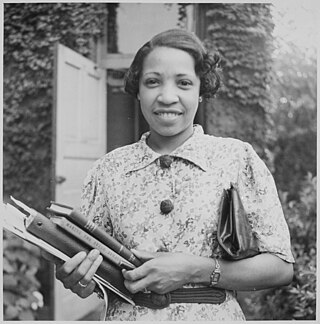
Lois Mailou Jones (1905-1998) was an artist and educator. Her work can be found in the collections of the Smithsonian American Art Museum, The Metropolitan Museum of Art, the National Museum of Women in the Arts, the Brooklyn Museum, the Museum of Fine Arts, Boston, Muscarelle Museum of Art, and The Phillips Collection. She is often associated with the Harlem Renaissance.

The Hollywood Palace is an hourlong American television variety show broadcast Saturday nights on ABC from January 4, 1964, to February 7, 1970. Titled The Saturday Night Hollywood Palace for its first few weeks, it began as a midseason replacement for The Jerry Lewis Show, another variety show, which lasted only three months.
Corteo is a Cirque du Soleil touring production that premiered in Montreal, Quebec, Canada on April 21, 2005.
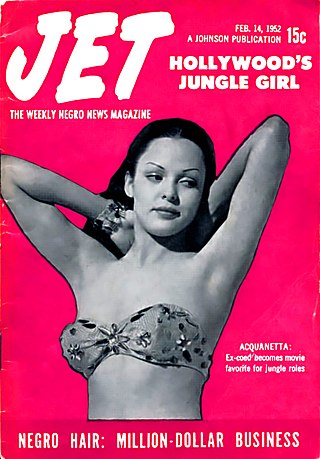
Jet is an American weekly digital magazine focusing on news, culture, and entertainment related to the African-American community. Founded in November 1951 by John H. Johnson of the Johnson Publishing Company in Chicago, Illinois, the magazine was billed as "The Weekly Negro News Magazine". Jet chronicled the civil rights movement from its earliest years, including the murder of Emmett Till, the Montgomery bus boycott, and the activities of civil rights leader Martin Luther King Jr.
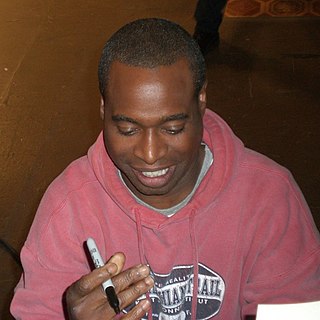
Phillip David Lewis is an American actor, comedian and director. He played hotel manager Mr. Moseby on the Disney Channel series The Suite Life of Zack & Cody and its spin-off, The Suite Life on Deck. Lewis has also appeared in series such as Lizzie McGuire, Friends, The Wayans Bros., Yes, Dear, Scrubs and How I Met Your Mother.

Johnson Publishing Company, Inc. (JPC) was an American publishing company founded in November 1942 by African-American businessman John H. Johnson. It was headquartered in Chicago, Illinois. JPC was privately held and run by Johnson until his death in 2005. His publications "forever changed the popular representation of African Americans." The writing portrayed African Americans as they saw themselves and its photojournalism made history. Led by its flagship publication, Ebony, Johnson Publishing was at one time the largest African-American-owned publishing firm in the United States. JPC also published Jet, a weekly news magazine, from November 1951 until June 2014, when it became digital only. In the 1980s, the company branched into film and television.

Alfred John Plastino was an American comics artist best known as one of the most prolific Superman artists of the 1950s, along with his DC Comics colleague Wayne Boring. Plastino also worked as a comics writer, editor, letterer, and colorist.
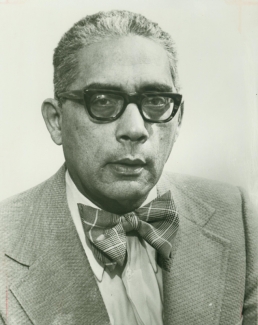
Simeon Saunders Booker Jr. was an African-American journalist whose work appeared in leading news publications for more than 50 years. He was known for his journalistic works during the civil rights movement and for his coverage of the 1955 murder of 14-year-old Emmett Till. He worked for The Washington Post, Jet, and Ebony.
Barnum's Kaleidoscape was an American circus staged by Feld Entertainment, the owners of Ringling Bros. and Barnum & Bailey Circus, at a start-up cost of $10 million. It ran for one season, 1999–2000. Inspired by both European traditions and the contemporary circus movement, it was the first Ringling show to be held under a tent since 1956 and also its first one-ring presentation in more than a century. The tent was carpeted with wood flooring and amenities to create an intimate setting with seating for 1,800 on cushioned seats and sofas and no one further than 50 feet from the circus ring. Besides traditional circus fare like popcorn upscale items such as cappuccino and veggie wraps were offered. The show consisted of 62 performers, 54 crew members, 8 horses and 27 geese, with 50 trucks involved in moving it from site to site.

Zarkana was a Cirque du Soleil stage production written and directed by François Girard. It began as a touring show in 2011 and was converted to a resident show in Las Vegas in late 2012. It premiered at Radio City Music Hall in New York City on June 29, 2011, and later toured to the State Kremlin Palace in Moscow and the Madrid Arena in Madrid.
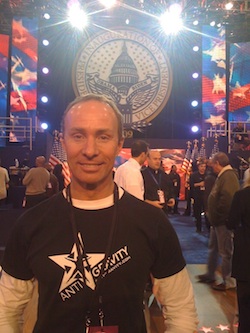
Christopher Calvin Harrison is an American director, dancer, acrobat, choreographer, fitness professional, and founder of performance troupe AntiGravity, Inc. and its spin-off fitness brand, AntiGravity Fitness.

Wanderlust Circus is a theatrical circus troupe based in Portland, Oregon, founded in 2006 by creative partners Noah Mickens and Nick "The Creature" Harbar. Since 2006, Wanderlust Circus has grown from a small band of creatives to a full-fledged circus troupe, and non-profit organization. The organization presently comprises a team of acrobats, a 10-piece swing band, a trick-roping cowboy clown; and several aerialists, contortionists, hand balancers, jugglers, and dancers. Their most popular recurring shows have been The White Album Christmas, A Circus Carol, and the dance party series MegaBounce.

A Russian swing is a large, floor-mounted swing which is sometimes used in circus performances to make impressive high acrobatic jumps.

Céline Marie Tabary was an artist and arts professor at Howard University who championed African-American art in 1940s Washington, D.C. She emigrated from France in 1938, teaching and working in Washington, D.C. through the 1950s, before returning to France. Tabary won the Landscape Prize in 1944 from the National Museum, Washington, D.C.
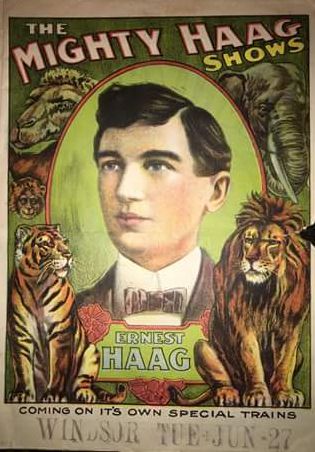
Mighty Haag Circus was started by American entrepreneur Ernest Haag in Shreveport, Louisiana. His circus toured continuously for over 40 years, from 1891 to 1938. During these years, the circus used a variety of types of transport: boat, carts, trains, horse-pulled wagons, and trucks. It was one of the largest traveling circuses in the United States.
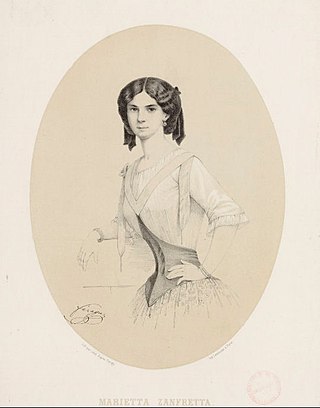
Marietta Zanfretta was an Italian tightrope dancer who found success in the United States. One of the greatest female tight-rope dancers in the world, she was known for performing en pointe on the tightrope, a rare feat.
Joe Boganny, also known as Joseph Toledano or Joseph Lazarus, was a British comedy performer and acrobat who led The Boganny Troupe, popular in early 20th century music hall and variety shows for their knockabout comedy and Risley act.
John Williams Cragg, known as Papa Cragg, was a British acrobat who founded a family troupe of acrobats often known as The Marvellous Craggs. They were popular in music hall and variety shows between about 1863 and 1917.
















